Energy is like the invisible force that makes our world come alive, which is why earning the Energy Merit Badge is such an exciting journey of discovery. Think of it as becoming an energy detective, uncovering the secret ingredient that powers everything around us.
From the warmth that fills your home on a cold morning, to the cool air keeping your favorite snacks fresh in the fridge, to the glow of lights helping you read at night – energy is constantly at work in our daily lives, and this merit badge will help you understand it all.
Think about all the places you go throughout your day. Your school needs energy to run the computers, power the cafeteria, and keep the classrooms comfortable. The offices where your parents work buzz with energy powering countless devices. Even the factories making everything from your shoes to your smartphone depend on massive amounts of energy to keep running.
Look outside and you’ll see energy in action everywhere! Cars and buses cruise down streets powered by gasoline energy. Airplanes soar through clouds using jet fuel energy. Electric trains glide along tracks. But energy isn’t just about big machines – it’s in the music flowing through your headphones, the wagging tail of your excited pet dog, and even in your own body as you run, jump, and play.
The amazing thing about energy is that it connects everything in nature – from the tiniest ant carrying a crumb to the mightiest thunderstorm rumbling overhead. It powers our modern digital world through the internet, keeps our food growing on farms, and drives the entire water cycle that brings us rain and shapes our weather patterns. Through the Energy Merit Badge, you’ll discover how all these pieces fit together in fascinating ways!
Energy Merit Badge Requirements
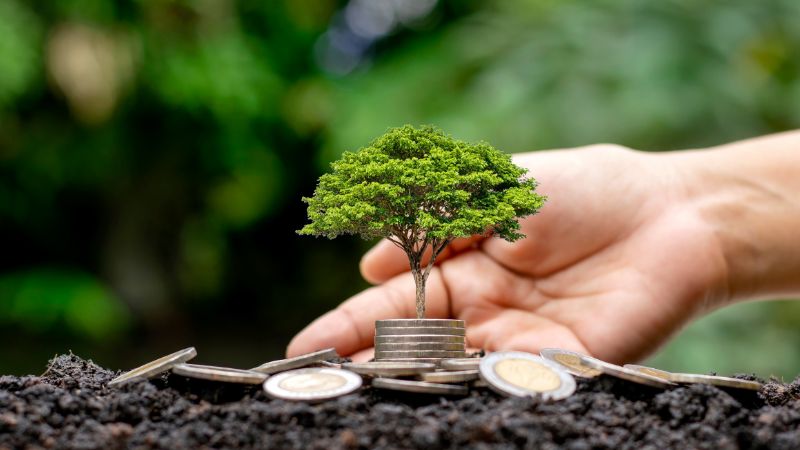
| 1. Do the following: (a) With your parent’s permission, use the internet to find a blog, podcast, website, or an article on the use or conservation of energy. Discuss with your counselor what details in the article were interesting to you, the questions it raises, and what ideas it addresses that you do not understand. (b) After you have completed requirements 2 through 8, revisit your source for requirement 1a. Explain to your counselor what you have learned in completing the requirements that helps you better understand the article. |
| 2. Show you understand energy forms and conversions by doing the following: (a) Explain how THREE of the following devices use energy, and explain their energy conversions: toaster, greenhouse, lightbulb, bow drill, cell phone, nuclear reactor, sweat lodge. (b) Construct a system that makes at least two energy conversions and explain this to your counselor. |
| 3. Show you understand energy efficiency by explaining to your counselor a common example of a situation where energy moves through a system to produce a useful result. Do the following: (a) Identify the parts of the system that are affected by the energy movement. (b) Name the system’s primary source of energy. (c) Identify the useful outcomes of the system. (d) Identify the energy losses of the system. |
| 4. Conduct an energy audit of your home. Keep a 14 day log that records what you and your family did to reduce energy use. Include the following in your report and, after the 14-day period, discuss what you have learned with your counselor. (a) List the types of energy used in your home such as electricity, wood, oil, liquid petroleum, and natural gas, and tell how each is delivered and measured, and the current cost; OR record the transportation fuel used, miles driven, miles per gallon, and trips using your family car or another vehicle. (b) Describe ways you and your family can use energy resources more wisely. In preparing your discussion, consider the energy required for the things you do and use on a daily basis (cooking, showering, using lights, driving, watching TV, using the computer). Explain what is meant by sustainable energy sources. Explain how you can change your energy use through reuse and recycling. |
| 5. In a notebook, identify and describe five examples of energy waste in your school or community. Suggest in each case possible ways to reduce this waste. Describe the idea of trade-offs in energy use. In your response, do the following: (a) Explain how the changes you suggest would lower costs, reduce pollution, or otherwise improve your community. (b) Explain what changes to routines, habits, or convenience are necessary to reduce energy waste. Tell why people might resist the changes you suggest. |
| 6. Prepare pie charts showing the following information, and explain to your counselor the important ideas each chart reveals. Tell where you got your information. Explain how cost affects the use of a nonrenewable energy resource and makes alternatives practical. (a) The energy resources that supply the United States with most of its energy. (b) The share of energy resources used by the United States that comes from other countries. (c) The proportion of energy resources used by homes, businesses, industry, and transportation. (d) The fuels used to generate America’s electricity. (e) The world’s known and estimated primary energy resource reserves. |
| 7. Tell what is being done to make FIVE of the following energy systems produce more usable energy. In your explanation, describe the technology, cost, environmental impacts, and safety concerns. – Biomass digesters or waste-to-energy plants – Cogeneration plants – Fossil fuel power plants – Fuel cells – Geothermal power plants – Nuclear power plants – Solar power systems – Tidal energy, wave energy, or ocean thermal energy conversion devices – Wind turbines |
| 8. Find out what opportunities are available for a career in energy. Choose one position that interests you and describe the education and training required. |
1. Finding and Discussing Credible Energy Information

I found an interesting article on energy conservation that covered several key aspects of energy use and its environmental impacts. Here’s what stood out to me:
Key Details from the Article:
- Energy Efficiency: The article discussed how using energy-efficient appliances, such as LED bulbs and Energy Star-rated refrigerators, can significantly reduce electricity consumption. This resonated with me because it highlights that small changes at home can make a big difference.
- Renewable Energy: It also emphasized the importance of renewable energy sources, like solar, wind, and hydroelectric power. Unlike fossil fuels, these sources are clean and sustainable, which is crucial for fighting climate change.
- Energy Consumption and Its Hidden Costs: I was surprised to learn that energy consumption goes beyond what we think of as “using energy” — it’s also involved in making products we use, transporting goods, and growing food. This made me realize how interconnected energy is with almost every part of our daily lives.
Questions the Article Raised:
- How do we make renewable energy more accessible to everyone? While renewable energy is growing, many people still rely on fossil fuels because they are more readily available and cheaper in some regions. What can be done to bridge this gap?
- What is the impact of energy conservation on economic growth? The article mentioned energy efficiency can save money and help the environment, but I wonder if there are any tradeoffs between conserving energy and continuing economic growth. Can both be achieved simultaneously?
- How can individuals do more to conserve energy? While the article gave general tips, I wonder if there are more advanced strategies or technologies individuals can use at home to further reduce their energy use.
Concepts I Didn’t Fully Understand:
- Energy Audits: The article mentioned “energy audits,” which are assessments of how much energy a home or business is using, but I didn’t fully understand how they work. What exactly do professionals look for during an audit, and is it necessary for everyone to get one?
- Smart Grids: Another term that confused me was “smart grids.” These are advanced systems that track and manage energy use in real-time, but I’d like to know more about how they work and how they differ from regular electrical grids.
Let’s move into requirement 2a.
2a. Energy Conversions in Common Devices
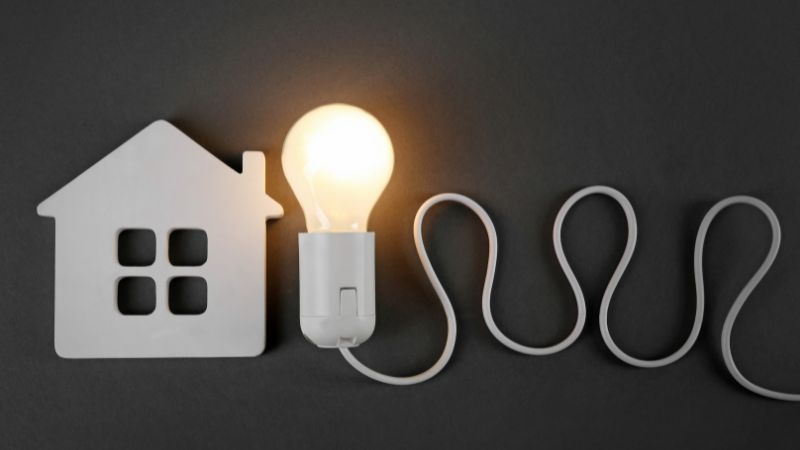
Have you ever wondered how your toaster turns bread into that perfect golden-brown toast? Or how your phone can do so many things with just a tiny battery? The magic behind all of these everyday devices is energy conversion — the process of changing one type of energy into another to get something done.
Whether it’s turning electrical energy into heat for toasting or using chemical energy to make a phone light up, energy conversions happen all around us, making life easier and more fun. Let’s take a closer look at how three common devices use energy to do their jobs.
1. Toaster: Electrical Energy to Heat Energy
Imagine you’re standing by the toaster, watching it work its magic. When you plug in the toaster and press the lever, it draws electrical energy from the outlet. This electricity then flows into metal coils inside the toaster.
But here’s the cool part: the metal coils resist the electrical flow, which causes them to heat up — a lot! This heat energy then toasts your bread, turning it into a crispy, delicious snack. So, the toaster does a quick but powerful energy transformation:
| Input Energy | Conversion Process | Output Energy |
|---|---|---|
| Electrical energy | The electrical energy is converted into heat by the metal coils. | Heat energy that toasts the bread. |
Pretty awesome, right? You start with electricity, and by the time that bread pops up, it’s crispy and ready to go!
2. Lightbulb: Electrical Energy to Light (and Heat) Energy
Now, let’s switch on a lightbulb. When you flick that switch, electrical energy travels into the bulb and hits the filament (the thin wire inside the bulb). This filament resists the flow of electricity and heats up, causing it to glow and give off light.
The result? Your room lights up! But here’s a fun fact: in older incandescent bulbs, some of that energy gets wasted as heat — that’s why bulbs can get so hot. Modern LED bulbs, on the other hand, use the energy much more efficiently, turning more of it into light and less into heat. Here’s how it breaks down:
| Input Energy | Conversion Process | Output Energy |
|---|---|---|
| Electrical energy | Electrical energy is converted to light and heat by the filament or LED. | Light energy (visible light) and heat energy. |
So, whether it’s a warm, glowing filament or an LED’s sleek light, the bulb is converting electricity into the light we need to see.
3. Cell Phone: Chemical to Electrical to Various Energy Forms
Now, let’s talk about your phone — a device that does so much with just a small battery. Your phone stores chemical energy in its battery, which is converted into electrical energy to power everything from calls to apps to games. This electrical energy is then transformed into different types of energy to make your phone work:
- Light energy shines from the screen, so you can see what you’re doing.
- Sound energy comes from the speaker when you play music or talk on the phone.
- Motion energy happens when your phone vibrates for a call or notification.
- Heat energy is produced by the battery and circuits inside the phone as it works.
It’s incredible how much your phone can do, and it all starts with chemical energy being converted into electrical energy, and then into light, sound, motion, and even heat! Here’s a breakdown of how it works:
| Input Energy | Conversion Process | Output Energy |
|---|---|---|
| Chemical energy (battery) | Chemical energy is converted to electrical energy to power the phone. | Light energy (screen), sound energy (speaker), motion energy (vibration), and heat energy (battery). |
From checking the weather to sending a text, all of this happens thanks to energy transformations happening in the background of your phone.
2b. Constructing a Simple System
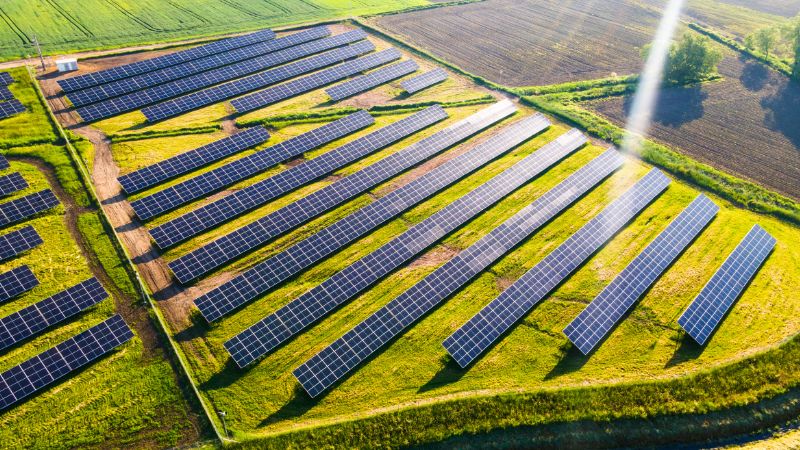
Let’s create a system that demonstrates two energy conversions: a solar-powered water pump. This is a perfect example of how energy from the sun can be harnessed and converted to do useful work. Not only does it showcase the conversion of solar energy to electrical energy, but also the conversion of electrical energy to mechanical energy to pump water.
The system begins with the solar panel, which acts like a giant energy collector, soaking up the sun’s energy. The sun’s energy, in the form of light, is converted into electrical energy by the solar panel. This electrical energy is then sent to a water pump, which uses it to create movement, converting electrical energy into mechanical energy to pump the water.
Here’s how we break it down:
1. Solar Energy to Electrical Energy
The first conversion happens when sunlight hits the solar panel. Solar panels are made of photovoltaic cells, which are designed to absorb sunlight. When sunlight hits these cells, it excites the electrons inside, causing them to move. This movement generates electricity, which can be used to power the pump.
| Input Energy | Conversion Process | Output Energy |
|---|---|---|
| Solar energy (sunlight) | Sunlight hits the solar panel and is converted to electrical energy. | Electrical energy (DC power). |
This is the most basic and direct conversion — the solar energy from the sun is turned into electrical energy that we can use to power other devices.
2. Electrical Energy to Mechanical Energy
Now that we have the electrical energy, it travels through wires to the water pump. The pump is powered by an electric motor, which converts the electrical energy into mechanical energy. This mechanical energy moves the pump’s components, forcing water to flow from one place to another.
| Input Energy | Conversion Process | Output Energy |
|---|---|---|
| Electrical energy | Electrical energy powers the pump, converting it into mechanical energy. | Mechanical energy (water movement). |
The mechanical energy is what makes the pump work, creating a flow of water — whether it’s for irrigation, filling a water tank, or circulating water in a pond. Now let’s move into requirement 3.
3. Understanding Energy Efficiency
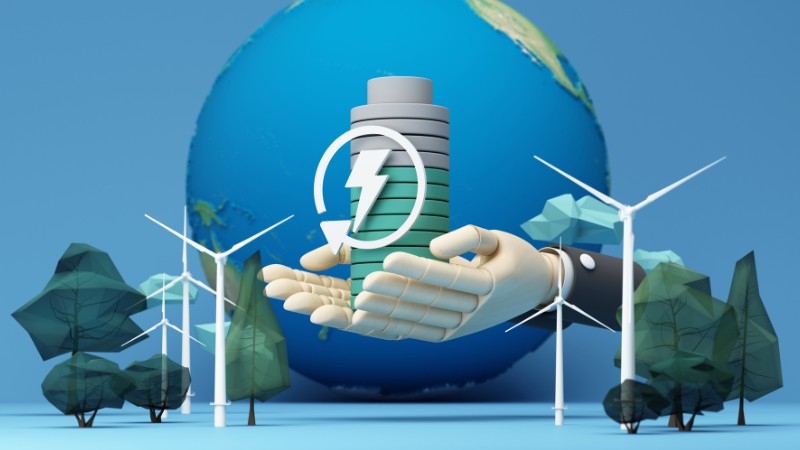
To demonstrate how energy moves through a system and produces a useful result, let’s look at the example of a home heating system—specifically, a gas furnace that warms up a home. This system is a great way to understand how energy flows, how we can optimize its use, and where energy is lost in the process. We’ll break this down step-by-step.
a. Parts of the System Affected by Energy Movement
In a typical home heating system that uses a gas furnace, there are several parts that are directly affected by the movement of energy:
- Gas Burner: This is where chemical energy from natural gas is converted into heat energy. The gas is burned, and the energy is released in the form of heat.
- Heat Exchanger: The heat from the burner is transferred to the air inside the furnace through a metal heat exchanger. The heat exchanger’s role is to warm the air without allowing the combustion gases to mix with the air that circulates in the house.
- Blower Fan: The fan is responsible for moving the heated air throughout the house. It converts mechanical energy (from the motor) into the movement of air that warms the rooms.
- Ducts and Vents: The air travels through ducts and exits the vents into different rooms of the house. The ducts and vents help distribute the warm air evenly across the space.
In this system, energy flows from the gas burner to the heat exchanger, then to the blower fan, and finally through the ducts into the rooms.
b. Name the System’s Primary Source of Energy
The primary source of energy in this heating system is natural gas, which is a fossil fuel. Natural gas is burned in the furnace, where its chemical energy is converted into heat. This is the starting point of the energy transformation in the system.
It’s important to note that natural gas is a non-renewable energy source, and the way it’s used in heating systems contributes to energy costs and environmental impact. However, it is still one of the most common sources for home heating in many parts of the world.
c. Identify the Useful Outcomes of the System
The useful outcomes of this home heating system are straightforward but essential:
- Warm Air: The main purpose of the system is to provide warmth in the home, making it more comfortable during cold weather. The heated air helps regulate indoor temperatures and maintain a comfortable environment.
- Improved Indoor Comfort: In addition to just heating the air, the system also helps control humidity and air quality in the home, which contributes to overall comfort.
- Energy for Other Systems: Sometimes, the furnace’s heating process can indirectly contribute to other energy needs, like keeping water in a water heater warm or helping to maintain air quality in the house.
These outcomes are considered “useful” because they directly contribute to the comfort and functionality of the home.
d. Identify the Energy Losses of the System
Unfortunately, no system is 100% efficient, and the home heating system is no exception. Here are some of the common energy losses in this system:
- Heat Loss through Ducts: One of the biggest energy losses comes from the ductwork. As heated air travels through the ducts, it can lose a significant amount of heat if the ducts are poorly insulated or if they’re located in cold areas like attics or crawl spaces. The heat that escapes from the ducts means less warmth reaches the intended rooms.
- Inefficient Combustion: Not all of the energy from the natural gas is used to heat the air. Some energy is lost as combustion gases (such as carbon dioxide and water vapor) exit the furnace through the vent. The more efficient the burner, the less energy is wasted in this process.
- Standby Losses: Even when the furnace isn’t actively heating, it can still lose energy. For example, some systems constantly consume a small amount of energy to keep the components running in standby mode, like the thermostat or the ignition system. This is a minor but continuous energy loss.
- Fan and Motor Losses: The blower fan, which is powered by an electric motor, also contributes to energy loss. While the fan is necessary to circulate the air, the motor itself is not 100% efficient, meaning some of the electrical energy is converted into heat, rather than mechanical energy for air circulation.
Also Read: Electricity Merit Badge Guide
4. Conducting an Energy Audit of Your Home: A 14-Day Log
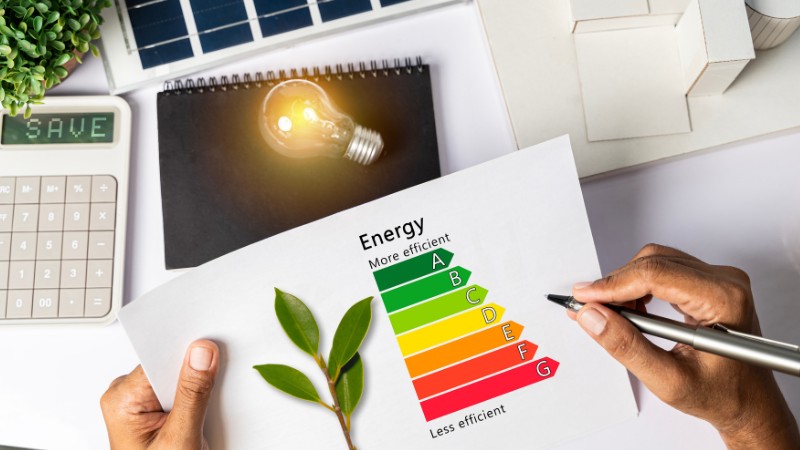
For this requirement, we’ll go through what an energy audit looks like, focusing on the different types of energy used in the home, how each energy source is delivered and measured, and the costs associated with it.
We’ll also explore transportation energy use, specifically how much fuel your family uses and how it affects energy consumption.
a. Types of Energy Used in Your Home
In any typical household, several types of energy are used for various activities. Below are the most common energy sources and how they’re delivered, measured, and their current cost:
1. Electricity
- Delivery: Electricity is delivered to homes through power lines from the local electric grid. It enters your home through a meter and is then distributed to different rooms and appliances via wires.
- Measurement: Electricity is typically measured in kilowatt-hours (kWh). Your electric meter tracks how many kWh your household uses.
- Cost: The cost of electricity can vary depending on your location, but on average, it’s between 10 to 20 cents per kWh in the U.S. For example, if you use 500 kWh per month, it could cost you anywhere from $50 to $100 per month.
2. Natural Gas
- Delivery: Natural gas is delivered to homes via underground pipelines that bring gas from processing plants to local distribution points.
- Measurement: It is typically measured in cubic feet or therms, where one therm equals about 29.3 kWh of energy.
- Cost: The cost of natural gas can vary, but it generally ranges from $1 to $2 per therm. A typical household may use between 400 to 1,000 therms per year for heating, cooking, and hot water.
3. Wood (If Applicable)
- Delivery: Wood is typically delivered in the form of logs, pellets, or chips for use in wood stoves or fireplaces. It can be purchased from a supplier or gathered (in areas where this is allowed).
- Measurement: Wood is usually measured in cords (a standard unit of measurement for stacked wood), or by weight if purchased in bulk (like pellets).
- Cost: The cost of wood varies widely by region, but a cord of firewood typically costs between $100 to $400 depending on location and the type of wood. Wood stoves are a cost-effective heating option in some areas, especially if you have access to free or cheap wood.
4. Oil (If Applicable)
- Delivery: Heating oil is delivered by truck to a storage tank located on your property. The oil is pumped from the tank into the furnace to heat your home.
- Measurement: Oil is measured in gallons.
- Cost: The cost of heating oil fluctuates, but on average, it costs about $2.50 to $4.00 per gallon. A typical household might use 400 to 1,000 gallons of heating oil each winter season, depending on the size of the home and the efficiency of the heating system.
5. Liquid Petroleum Gas (LP Gas or Propane)
- Delivery: Propane is delivered by truck to your home and stored in a large tank outside.
- Measurement: Propane is measured in gallons or pounds.
- Cost: The cost of propane varies, but it generally ranges from $2.00 to $4.00 per gallon. A typical household may use anywhere from 200 to 1,200 gallons of propane annually, depending on how much it’s used for heating, hot water, or cooking.
Transportation Fuel Use: Family Car or Vehicle
For your energy audit, it’s important to also consider the fuel used for transportation. This includes any car, truck, or other vehicles your family uses. Here’s how to track and assess it:
1. Fuel Type
- Gasoline is the most common fuel for vehicles, although some families may use diesel, liquefied petroleum gas (LPG), or electricity (in the case of electric cars).
2. Fuel Consumption and Mileage
- Miles per Gallon (MPG): Check how efficient your car is in terms of fuel economy. Most modern cars get between 20 and 30 miles per gallon (mpg) of gasoline. For example, if your family car gets 25 mpg, and you drive 300 miles a week, you would use 12 gallons of gas each week.
3. Total Miles Driven
- Track the number of miles your family drives in a week or month. This helps you determine how much fuel is being used for commuting, errands, or long trips.
| Fuel Type | Fuel Efficiency (MPG) | Weekly Miles Driven | Gallons Used per Week |
|---|---|---|---|
| Gasoline | 25 MPG | 300 miles | 12 gallons |
| Diesel | 20 MPG | 300 miles | 15 gallons |
| Electric (EV) | 4 miles per kWh | 300 miles | Approx. 75 kWh |
Example of a 14-Day Log
For this part of the energy audit, you will keep a 14-day log of energy use in your household. The log will track how you reduce energy consumption each day and can include simple steps like turning off lights when not in use, adjusting the thermostat, or reducing car trips. Below is an example of a daily log entry:
| Day | Action Taken | Energy Used/Reduced | Energy Source |
|---|---|---|---|
| Day 1 | Turned off lights when not in use | Reduced electricity | Electricity |
| Day 2 | Set thermostat lower by 2°F | Reduced heating | Natural Gas |
| Day 3 | Used energy-efficient LED lights | Reduced electricity | Electricity |
| Day 4 | Carpool to work | Reduced gasoline usage | Gasoline |
| Day 5 | Limited TV and computer use | Reduced electricity | Electricity |
b. Ways to Use Energy Resources More Wisely
Now that we’ve discussed how energy moves through systems and how it’s converted, let’s dive into practical ways you and your family can use energy resources more wisely. This is all about considering the energy required for everyday tasks — from cooking and showering to using lights and driving — and finding ways to be more efficient in how we use that energy. We’ll also cover sustainable energy sources, what they mean, and how reuse and recycling can help us lower our energy consumption.
1. Energy Use in Daily Life
We use energy for many things every day. Let’s look at some of these common activities and how we can use energy more efficiently:
- Cooking:
Cooking often involves using a lot of energy, especially when using an oven or stovetop. To use energy more wisely:- Use a microwave or pressure cooker instead of the oven to cook small meals more quickly and efficiently.
- Cook in batches to avoid reheating the oven several times.
- Turn off heat a few minutes before food is fully cooked and let residual heat finish the job.
- Showering:
Heating water for showers uses a lot of energy, but we can reduce this by:- Using low-flow showerheads, which use less water and require less energy to heat.
- Taking shorter showers can reduce the amount of hot water needed, saving both water and energy.
- Using Lights:
Lighting accounts for a significant part of electricity consumption. Here’s how you can save:- Switch to LED bulbs, which use up to 80% less energy than traditional incandescent bulbs.
- Turn off lights when you leave a room or when they’re not needed.
- Use natural daylight during the day, and only use artificial lighting when it’s necessary.
- Driving:
Driving uses gasoline or diesel, but there are ways to reduce energy waste:- Carpooling or using public transportation can drastically reduce fuel consumption.
- Driving efficiently by avoiding rapid acceleration and keeping your car well-maintained will improve fuel economy.
- Watching TV and Using the Computer:
Electronics like TVs and computers consume electricity, but we can reduce their energy use by:- Unplugging devices when they’re not in use or using a power strip to easily turn off multiple devices at once.
- Using energy-saving settings on your TV, computer, or gaming systems.
- Limiting screen time can also reduce the total energy consumption.
2. What Are Sustainable Energy Sources?
Now let’s talk about sustainable energy sources — energy that comes from resources that are naturally replenished and have a minimal environmental impact. These sources are crucial because they help us reduce dependence on fossil fuels, cut down on pollution, and combat climate change. Here’s a quick overview of common sustainable energy sources:
- Solar Energy:
Solar panels convert sunlight directly into electricity, making solar energy one of the most popular renewable energy sources. It’s sustainable because the sun’s energy is abundant and can be harnessed anywhere there’s sunlight. - Wind Energy:
Wind turbines convert wind energy into electricity. Wind is a renewable resource that can be used without producing emissions, making it both clean and sustainable. - Hydropower:
This energy comes from the movement of water, usually in rivers or dams. It generates electricity through turbines that convert kinetic energy into electrical energy. It’s reliable and sustainable as long as the water sources are well-managed. - Geothermal Energy:
Geothermal energy uses the Earth’s natural heat from below the surface to produce electricity or heat buildings. It’s a renewable resource that doesn’t produce harmful emissions.
These sources are sustainable because they don’t deplete over time like fossil fuels, and they produce very little pollution.
3. How Reuse and Recycling Can Help Reduce Energy Use
In addition to switching to sustainable energy sources, we can also reduce our energy consumption by reusing and recycling items. Here’s how these practices help save energy:
- Reuse:
Reusing materials and products means fewer new products need to be made, which saves energy used in manufacturing and transportation. For example:- Reusable shopping bags reduce the need for plastic bags, which take energy to produce.
- Reusable containers and bottles reduce the demand for single-use plastics, saving energy in the production process.
- Recycling:
Recycling helps save energy by ensuring that raw materials don’t have to be mined, extracted, or processed from scratch. For example:- Recycling aluminum saves up to 95% of the energy it would take to produce new aluminum from raw materials.
- Recycling paper reduces the energy used to cut down trees, transport them, and process the wood into paper products.
By reusing and recycling, we can reduce the need for raw material extraction and manufacturing processes, which are energy-intensive and contribute to pollution.
5. Reducing Energy Waste in Your School or Community

Now that we’ve discussed how to use energy more wisely in our daily lives, let’s take a step further and identify specific areas of energy waste in schools or communities.
By recognizing these areas, we can make meaningful changes to reduce waste, lower costs, and benefit the environment. Here are five examples of energy waste and how we can address them, along with a discussion on the trade-offs involved in these changes.
a. Wasting Energy by Leaving Lights On in Empty Rooms
Energy Waste:
In schools or community buildings, lights are often left on in rooms that aren’t being used. This is a common habit that leads to unnecessary electricity consumption.
Solution:
- Install motion-sensor lights: These automatically turn off when no movement is detected in a room, ensuring lights aren’t left on for longer than needed.
- Encourage manual switching off: Teachers and staff should make it a habit to turn off lights when leaving classrooms or meeting rooms.
How This Helps:
- Lower Costs: This simple change can reduce the school’s electricity bills significantly. By using energy only when it’s needed, the school can cut down on unnecessary energy consumption.
- Reduce Pollution: Reducing energy consumption lowers the demand on power plants, which in turn reduces the pollution and greenhouse gas emissions from burning fossil fuels.
Trade-Offs:
- Routine Change: People might need to develop the habit of turning off lights when they leave a room. Motion-sensor lights would be an easy way to reduce the need for constant attention to this task.
- Resistance to Change: Some may resist using motion-sensors, especially if they feel the lights might not turn on quickly enough when they enter a room. However, these sensors can be calibrated to work effectively and are a great long-term investment.
b. Overheating or Overcooling Buildings
Energy Waste:
In many schools or community buildings, heating and cooling systems are left running even when rooms are unoccupied, or when the temperature settings are inefficient.
Solution:
- Install programmable thermostats: These can automatically adjust the temperature based on the school’s schedule, reducing energy use when the building is empty.
- Improve insulation: By sealing windows and doors, you can reduce the amount of heat or air conditioning that escapes, making the building more energy-efficient.
How This Helps:
- Lower Costs: Reducing the amount of energy used for heating and cooling lowers utility bills significantly.
- Reduce Pollution: More efficient temperature control reduces the energy demand on fossil fuel power plants, cutting down on harmful emissions.
Trade-Offs:
- Routine and Habit Change: People might resist having thermostats set to an automatic schedule because they’re used to adjusting temperatures manually. However, a programmable thermostat can be set and forgotten, making it a long-term convenience.
- Comfort Concerns: Some individuals may feel that automated temperature control is less customizable, but the overall comfort can actually improve as the building maintains a consistent, energy-efficient temperature.
c. Wasting Water and Energy with Inefficient Faucets and Toilets
Energy Waste:
Inefficient faucets and toilets in schools or community centers can waste both water and the energy required to heat that water. Water that runs unnecessarily can add up to higher energy and water bills.
Solution:
- Install low-flow faucets and toilets: These use less water per use, which reduces the amount of hot water that needs to be heated.
- Encourage water conservation: Remind students and staff to turn off faucets when not in use and to use less water when washing hands.
How This Helps:
- Lower Costs: Reducing water use also reduces the energy used to heat water, saving money on both water and energy bills.
- Reduce Pollution: Using less water and energy helps reduce the strain on local water treatment facilities and power plants, decreasing overall environmental impact.
Trade-Offs:
- Routine Change: Encouraging students and staff to be more mindful about water use can be difficult at first, but it’s a good habit to develop. Installing low-flow faucets and toilets requires a small upfront cost but pays off through savings over time.
- Convenience: Some may resist the change, thinking low-flow toilets or faucets don’t work as well. However, modern low-flow models are just as effective, and the environmental benefits outweigh any inconvenience.
d. Leaving Computers and Electronics On Overnight
Energy Waste:
Computers, projectors, and other electronics are often left on after school or community activities, consuming unnecessary electricity.
Solution:
- Turn off devices when not in use: Encourage staff and students to turn off computers, projectors, and other electronic devices at the end of each day.
- Use energy-saving settings: Set computers and other electronics to enter sleep mode when idle, so they consume less power.
How This Helps:
- Lower Costs: Turning off devices when not in use reduces electricity costs.
- Reduce Pollution: Lower energy consumption means less power is needed from the grid, reducing pollution from power plants.
Trade-Offs:
- Routine Change: It may take time to develop the habit of turning off devices, but this is an easy and effective way to save energy.
- Resistance to Change: Some may resist because they are used to leaving devices on for convenience or might be concerned about slow startup times. However, many devices are designed to power up quickly, and the energy savings are worth the small extra time spent starting up the next day.
e. Wasting Fuel with Inefficient School Buses for Short Trips
Energy Waste:
School buses are often used for short trips to local events, consuming large amounts of fuel for relatively short distances.
Solution:
- Carpooling: Encourage students, staff, and parents to carpool or use smaller, fuel-efficient vehicles for shorter trips.
- Use electric vehicles (EVs): If possible, use electric school buses for local trips, which produce no direct emissions and are more energy-efficient.
How This Helps:
- Lower Costs: Carpooling reduces the number of vehicles needed, saving on fuel costs.
- Reduce Pollution: Using electric vehicles or reducing the number of trips helps decrease greenhouse gas emissions and overall fuel consumption.
Trade-Offs:
- Logistics and Coordination: Carpooling requires careful planning and coordination, which may be challenging. Some families might resist changes due to convenience or scheduling conflicts, but with a good system in place, the benefits will far outweigh the minor inconvenience.
- Comfort: Some people may prefer the convenience of individual vehicles or may not feel comfortable with the idea of using electric vehicles due to unfamiliarity. However, the environmental and cost-saving benefits make the effort worthwhile.
Great work! You’ve just wrapped up Part 1 of the Energy Merit Badge, which covered everything from understanding energy conservation to conducting an energy audit at home, and even identifying ways to reduce energy waste in your school or community. By completing Requirements 1 to 5, you’ve gained a solid foundation in how energy works in everyday life and how to use it more efficiently. Awesome job! 🙌
Now that we’ve got all that covered, it’s time to jump into Part 2! This next section will dive deeper into the big-picture stuff, like energy resources, how energy systems are improving, and even energy career opportunities. It’s going to be an exciting and informative next step in your energy journey! Let’s get started!









